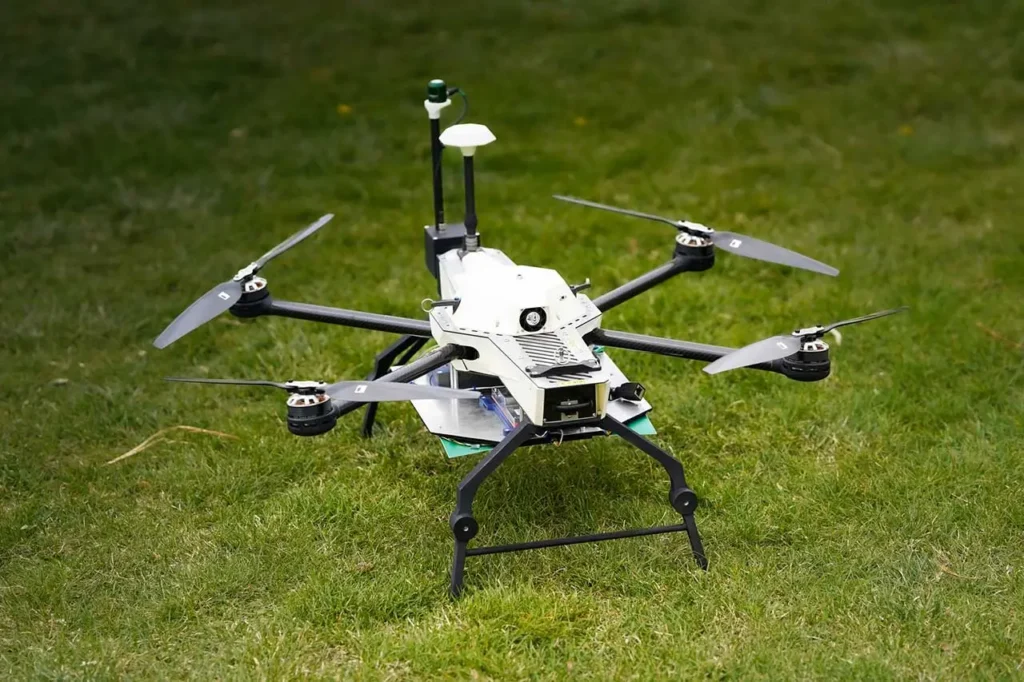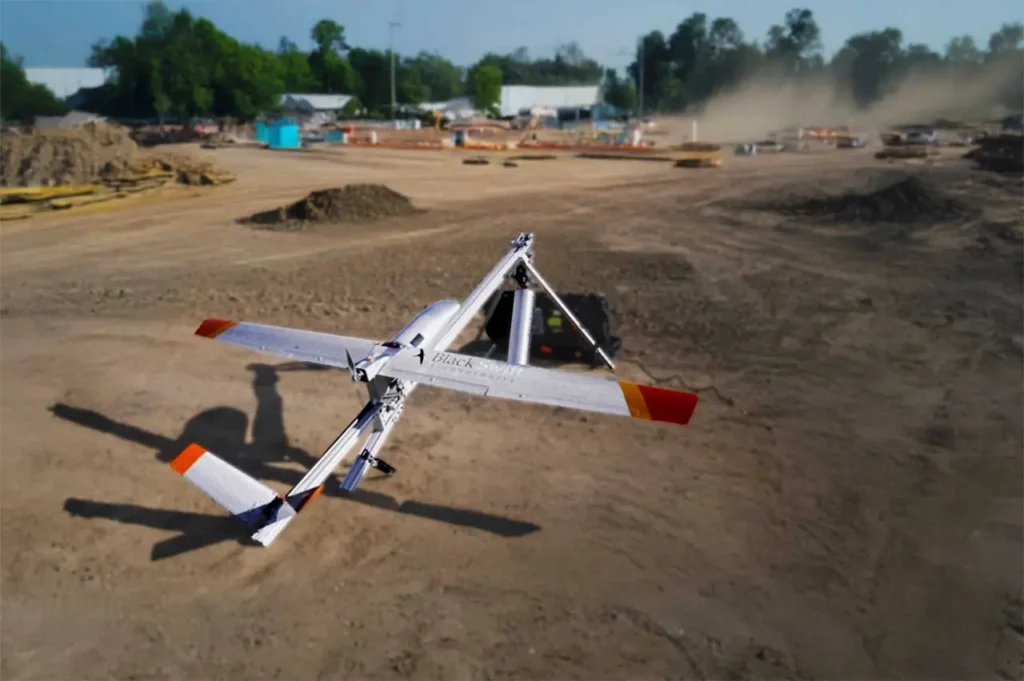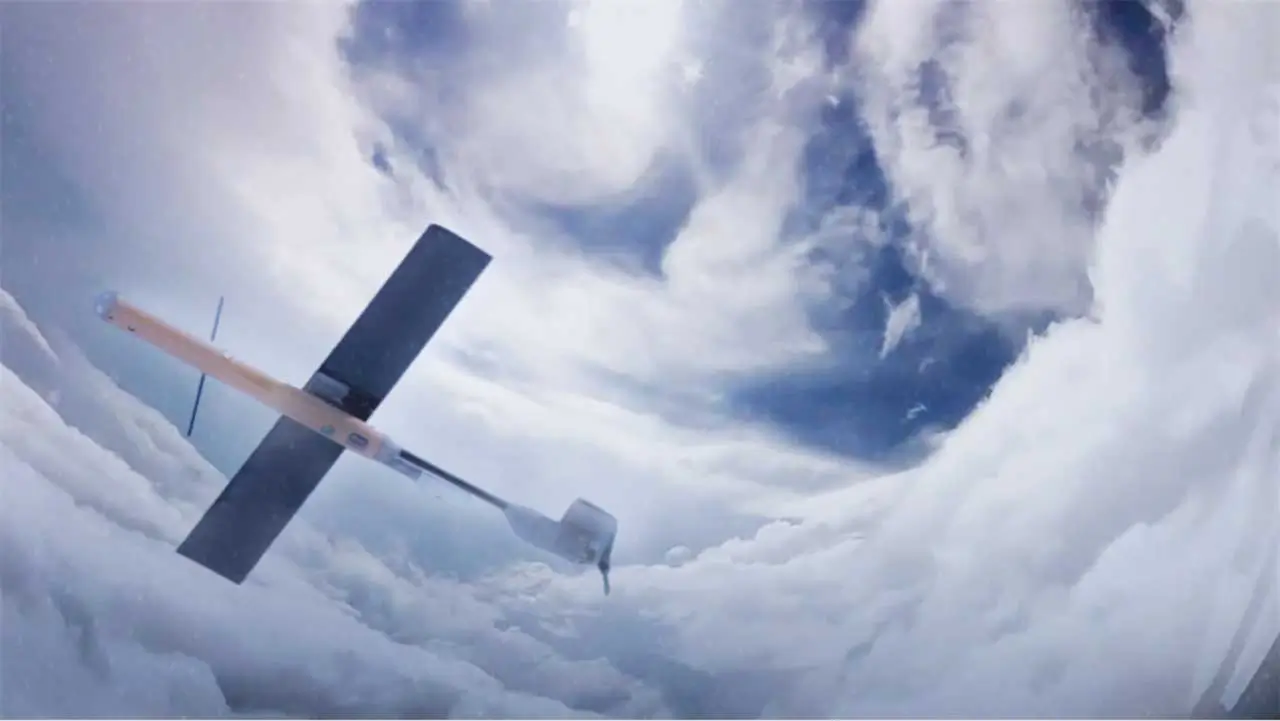When it comes to capturing critical data in some of nature’s most violent and unpredictable phenomena across the world, Black Swift Technologies stands heads and shoulders above the rest. They design rugged, autonomous drones not just to survive, but to excel, in extreme conditions that typically ground other aircraft and in places too dangerous for humans to tread.
This is the story of how Dr. Jack Elston, Dr. Maciej Stachura and their team merged aerospace expertise with ground-breaking technology to create a fleet of uncrewed systems that gather vital information from hurricanes, tornadoes, volcanoes and beyond, to push the boundaries of what’s possible in autonomous flight and environmental science.
A Storm-Born Mission
With a PhD in Aerospace Engineering from the University of Colorado Boulder, Elston’s academic and practical experience launched him to the forefront of autonomous flight. “My PhD work was literally flying through tornadic supercells,” Elston explained.
Confronted by the inadequacy of existing autopilot hardware, Elston and Stachura took matters into their own hands. “At the time, there weren’t a lot of autopilot options out there and they had to survive the toughest environments, so we built our own hardware, and on top of that, all the software to support it,” Jack said.
Born in Boulder, Colorado in 2011, BST has since grown from those DIY roots into a leader in autonomous aerial systems designed for environmental science, disaster response and critical industrial data gathering.

Durable by Design: Building for Extremes
From the beginning, BST set itself apart through a relentless focus on ruggedization and engineering autonomy. “We built a system that could do exactly what we wanted and survive,” Elston said. Whether sampling pressure inside a hurricane or collecting volcanic gas from active craters, BST designs its UAS to thrive where most aircraft fail.
Each aircraft in the BST fleet is governed by the SwiftCore Flight Management System, which simplifies mission planning, handles real-time sensor data and manages multiple aircraft with minimal user workload. “We spend a lot of time trying to make things as automatic as possible,” Elston added. “You can’t really be over-tasking the person in charge in extreme environments,” he said.
Meet the Fleet: Custom Drones for Mission-Critical Work
Black Swift’s modular UAS lineup has evolved over time—each tailored to unique operational demands and designed for specific environmental and research needs.
The S2: Heavy-Duty for High-Stakes Missions
The Black Swift S2 is a fixed-wing UAV built to handle long flights in unpredictable conditions. Deployed via a 145 psi pneumatic launch tube, it launches rapidly in confined or rugged areas and cruises at 40 mph. With up to two hours of endurance, a 10-foot wingspan and a composite airframe, the S2 can fly into volcanic plumes, over large wildfire zones or across agricultural test fields.
One of its key use cases has been atmospheric research around volcanoes, where it collects ash plume and gas concentration data despite downdrafts and high winds. In agriculture, it integrates custom payloads to monitor soil moisture across thousands of acres, equipping farmers with data that goes far beyond basic aerial imaging.
The S0: Versatility for the Atmosphere
BST’s most compact fixed-wing aircraft, the S0, comes in two configurations: vertical takeoff with a transition to forward flight and an air deployed variant.
The S0 is built for high-altitude scientific profiling. Weighing just over 3 pounds, it collects vertical profiles of temperature, wind and humidity up to 15,000 feet, often in hurricane gusts.
Its major breakthrough came courtesy of a collaboration with NOAA. During hurricane missions aboard NOAA’s P-3 Orion aircraft, the S0 is launched mid-air in a precision sequence: the drone is dropped in a tube, deploys via parachute, then extends its wings and autonomously dives into the storm’s boundary layer. Elston described the operation: “You drop it, it tumbles out, a parachute deploys, then it transitions… and you’re flying through the hurricane.”
These efforts set multiple records: 228 mph wind speeds measured inside a storm’s eyewall, a 169-nautical-mile radio link, and the lightest drone ever flown in a hurricane at just 2.6 pounds. The real-time data these flights provide have revolutionized short-term forecast modeling and storm response for NOAA.
Meanwhile, the VTOL S0 is engineered for simplicity and speed. Weighing roughly 2.6 pounds, it can be launched by a single operator in under a minute, making it invaluable in disaster zones or remote landscapes. Elston explained, “No tube, no runway, just set it down, point it into the wind and hit ‘takeoff.’ This simplicity means more data in more places, when it really counts.” Deployed after storms, it helps capture weather updates and air quality assessments for first responders.
Its role in fighting wildfires has grown particularly important. By launching from firelines or mountain ridges, it helps emergency crews map wind shifts, rising heat, and smoke plumes, all of which can dictate fire behavior and evacuation decisions.
E2 Quadcopter: Agile and Adaptable
The E2 quad bridges the gap between portability and performance. With VTOL capabilities and the ability to carry up to 4 pounds of scientific sensors, it’s often used for soil, air quality, and environmental studies. Its flight time hovers between 30–45 minutes, and it can be outfitted in minutes with instruments ranging from LIDAR and gas analyzers to multispectral imagers.
In precision agriculture, the E2 flies low and slow to map soil moisture, compaction and nutrient zones with high spatial resolution. In industrial settings, it’s used for inspecting pipelines, solar arrays and construction projects. “It’s not just a drone—it’s a mobile sensor lab you can take anywhere,” said Elston.
The New Frontier: The S3
BST’s latest innovation, the Swift S3, integrates everything the team has learned from previous platforms into a next-generation fixed-wing system built for elite endurance, modularity and resilience. Payload capacity increases to as much as 8 pounds and flight endurance exceeds two hours, even in challenging weather.
Its enhanced power management system enables pilots to trade speed or payload for endurance, giving operators the flexibility to adapt mid-flight. The airframe is reinforced with weather sealing and redundant systems, enabling reliable operations in turbulent, dirty or corrosive environments. Elston noted, “We’re preparing the S3 for upcoming demos in Mexico, areas notorious for their environmental variability.” These demos will test the S3 across coastal storms, deserts, and mountainous terrain to prove its readiness for complex global missions.

In the Elements: BST in Action
BST’s drones truly shine in some of the most challenging and unforgiving environments on Earth. Designed to operate autonomously where human presence is either impossible or unsafe, these rugged aircraft enable unprecedented access to critical data that provides essential insights for research, safety and operational decision-making.
Tornado Chasing: Flying Into Nature’s Fury
BST’s connection to tornado research runs deep. Elston’s PhD laid the groundwork for autonomous flight into supercells, a lineage the company continues with drones capable of flying directly into damaging wind systems. This data helps researchers better understand storm structures and improve early warnings. “Our systems allow us to continue that difficult, dangerous work, collecting data right where it counts, inside conditions no human can safely experience,” Elston said.
Hurricane Missions: Setting New Records
NOAA’s use of the S0 in hurricane studies was a major turning point. Missions have collected real-time data from the storm eye to outer bands, at altitudes ranging from 50 to 15,000 feet—a depth and detail never before achieved by aircraft of its size. The S0’s combination of lightweight design and robust performance made it a game-changer. Elston proudly stated, “We just set a world record flying into a hurricane—getting atmospheric pressure, wind, and structural data that’s never been collected before.”
Volcano Monitoring: Surviving the Ash and Gas
BST platforms have been deployed in Costa Rica and other volcanically active areas. The S2, in particular, handles extreme updrafts and ash clouds while collecting sulfur dioxide, ash density and plume patterns.These insights support eruption prediction and local safety efforts. “No commercial off-the-shelf system could survive what ours do,” Elston noted.
Wildfire and Disaster Response: Rapid Data Where It Matters
As natural disasters intensify, BST drones—especially the hand-launch S0 and the E2 quad—are helping emergency teams monitor conditions quickly and safely. They’ve been used to map post-landslide air currents, assess soil moisture for fire-prone areas and aid in recovery planning after hurricanes and floods. With rapid data transmission capabilities, the drones relay live information back to command centers or mobile units to help coordinate resources where they’re needed most—whether that’s reinforcing firebreaks, protecting critical infrastructure, or organizing evacuations. Even after the initial flames are controlled, the S0 remains a vital asset with its ability to quickly survey large, burned landscapes and identify hazards.
Soil Monitoring for Sustainable Agriculture
The E2 and S2 drones support precision farming by mounting soil radiometers, moisture sensors, and cameras that identify nutrient deficiencies and irrigation needs. The S2’s large payload capacity and endurance make it particularly effective for sustained agricultural campaigns by providing actionable insights directly to farm operators and researchers. Farmers and researchers also depend on BST’s autonomous data gathering for precise soil moisture, compaction and integrity analysis. With modular payloads, BST drones have also changed how the both military and commercial end-users approach construction of aircraft runways, roads and buildings.
Flight Into the Future: Demos and Deployment
Black Swift Technologies, under Dr. Elston and Stachura’s stewardship, has architected a new paradigm for UAS. From their humble autopilot origins to world-record hurricane flights and volcanic missions, BST’s modular aircraft and SwiftCore automation have set new standards for resilience, automation and actionable data in the world’s harshest environments.
With the S3 slated for live demonstrations in Mexico, BST continues to prepare for broader deployments in both civilian and research-focused missions. “We’re really excited to get out there and show what S3 can do,” Elston said. The aircraft’s modularity, autonomy, and power efficiency are expected to open BST’s technologies to broader international collaborations and more industries beyond scientific research.
Elston summed up BST’s philosophy best: “You build for the extremes, everything else just gets easier along the way.”
By: Dawn Zoldi

